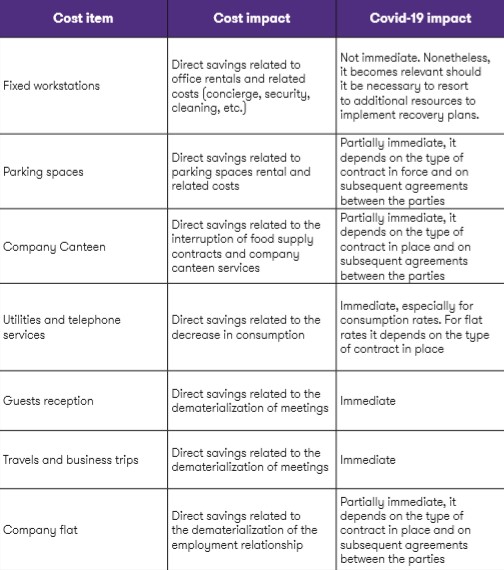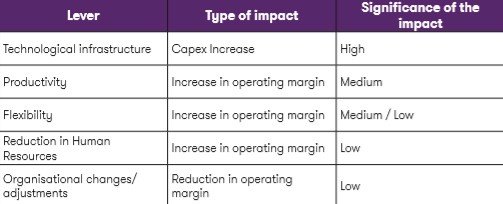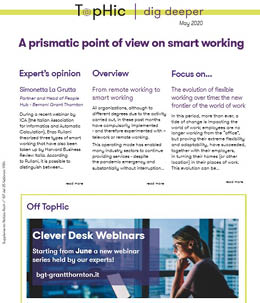-
Transactional advisory services
Find out more about the transactional advisory services of Grant Thornton Financial Advisory Services
-
Valuations
Find out more about the valuations services of Grant Thornton Financial Advisory Services
-
Mergers and acquisitions
Find out more about the merger and acquisition services of Grant Thornton Financial Advisory Services
-
Forensic and investigation services
Find out more about the forensic and investigation services of Grant Thornton Financial Advisory Services
-
Recovery & reorganisation
Find out more about the Recovery & reorganisation services of Grant Thornton Financial Advisory Services
-
Business risk services
Find out more about the business risk services of Grant Thornton Financial Advisory Services
-
Business consulting
Find out more about the business consulting services of Grant Thornton Financial Advisory Services
-
Capital market
Capital market
-
Corporate and business tax
Find out more about our corporate and business tax services.
-
Direct international tax
Find out more about our direct international tax services.
-
Global mobility services
Find out more about our global mobility services.
-
Indirect international tax
Find out more about our indirect international tax services.
-
Transfer pricing
Find out more about our transfer pricing services.
-
Litigation
Our lawyers and accountants can manage all defense measures provided not only by the Italian law, but also by EU regulations and conventions
-
Family business
Find out more about our Family business services.
-
Legal
The client can be assisted in every need and with the same care both on important operations or disputes and on simple matters

-
Back office outsourcing
Find out more about our Back office outsourcing services
-
Business process outsourcing
Find out more about our business process outsourcing services.
-
Compilation of financial statements
Find out more about our compilation of financial statements services.
-
Tax compliance
Find out more about our tax compliance services.
-
Electronic invoicing
Find out more about our electronic invoicing services
-
Electronic storage
Electronic storage is an archiving procedure that guarantees the legal validity of a digitally stored electronic document
-
Revaluation of corporate assets
Find out your civil and fiscal revaluation of tangible, intangible and financial assets
-
Human resources consulting
Find out more about our human resources consulting services.
-
Payroll
Find out more about our payroll services.
-
HR News
HR News the monthly information newsletter by Grant Thornton HR
-
Cybersecurity
GT Digital helps clients structure information security management internal functions, also through partially or totally outsourced functions
-
Agile and Programme Management
GT Digital provides support in the adoption and implementation of different portfolio management
-
Robotic Process Automation
Our “BOT Farm” can rely on digital workers able to help clients in routine activities, allowing employees to deal with more added-value activities
-
Data strategy and management
GT Digital can support clients in seizing the opportunities offered by Big Data, from the definition of strategies to the implementation of systems
-
Enterprise Resource Planning
We support clients in selecting the most appropriate ERP System according to their specific needs, helping them also understand licensing models
-
IT strategy
GT Digital supports clients in making strategic choices, identifying innovation opportunities, comparing themselves with competitors
-
IT service management
We can support with software selection and with the implementation of dedicated tools for the management of ICT processes
-
DORA and NIS 2
The entry into force of the DORA Regulation and NIS2 represents a major step towards the creation of a harmonised regulatory framework
The new frontier of the world of work
In this period, more than ever, a tide of change is impacting the world of work; employees are no longer working from the “office”, but proving their extreme flexibility and adaptability, have succeeded, together with their employers, in turning their homes (or other location) in their places of work. This evolution can be summarised with a single expression: flexible working or smart working, as it is commonly called in Italy. Despite having applied it autonomously and effortlessly ourselves, the question more frequently asked in this period is: what does it imply, exactly?
This article is aimed at explaining, in a brief and simple way, what the so-called “smart working” - this new tool which is proving the best and more flexible way of working - actually is. Smart working originated in the 70s and was introduced in Italy only when Law n. 81/2017 entered into force and laid the foundations for its adoption. Specifically, smart working is a way of carrying out the employment relationship, regulated by an agreement between the parties, without specific obligations as concerns the working time or place.
With smart working, work is carried out partly from the corporate premises and partly remotely, without a fixed workstation and within the limits of the maximum duration of the daily and weekly working times, as set forth under the law and collective labour agreements. In other words, basing on a dedicated agreement, the employee carries out part of his working activity from the ordinary place of work and part remotely, in any other place of his choice.
The above in compliance with the maximum daily and weekly working time limits set forth by the law and national collective labour agreements and with the employee’s right to disconnect at the end of the contractual working time. Usually, smart working implies the need to enter into a dedicated individual agreement, to be notified electronically to the Ministry of Labour and Social Policy on the website Cliclavoro. Smart working should not be confused with teleworking: the latter implies the performance of work exclusively from the employee’s domicile.
Smart working can be considered as a flexibility tool, not only with reference to the performance of one’s working activity, but also as concerns the obligations relevant to safety on the workplace. Actually, in flexible working such obligation is considered to have been complied with by the mere provision by the employer of a written notification outlining the general and specific risks connected with the specific ways in which the working relation is carried out.
The employee, in turn, is required to cooperate for the implementation of the prevention measures provided for by the employer and indicated in the abovementioned notification. As far as the employee’s rights are concerned, the protection against accidents at work still applies to smart working, as well as the same economic and regulatory conditions, which should not be lower than those applied to employees carrying out the same tasks exclusively from the corporate premises. Furthermore, the right to lifelong learning can be granted to flexible workers.
As mentioned above, smart working has nowadays become (like it or not) a new flexibility tool allowing many people to carry out their job, due to the Covid-19, or Coronavirus, public healthcare emergency affecting Italy.
Being used as a flexibility tool during the Coronavirus pandemic, smart working has undergone some minor changes to make it more widely and promptly applicable. First of all, the Decree of the President of the Council of Ministers dated 25 February 2020 recommended the use of smart working wherever possible in the first regions identified as “red zones” (Lombardy, Veneto, Piedmont, Friuli Venezia Giulia, Liguria, Emilia Romagna), with reference to businesses located in said regions and employees resident or domiciled there, even though working outside said zones, without the need of specific individual agreements.
Subsequently, with the worsening of the situation and the extension of the state of emergency, the Decree of the President of the Council of Ministers dated 1 march 2020 extended the recommendation to adopt flexible working on the entire national territory. In particular, for the entire duration of the state of emergency (to date established up to 31 July 2020), the Government recommended the use of smart working for all employment relationships, even if lacking the individual agreements provided for by the law.
Finally, given the effectiveness of this tool, not just in terms of performance of the working activity, but also as a way to contain the spread of the virus, the future regulatory measures (first of all, the so-called Relaunch Decree) will provide for working parents employed in the private sector and with at least one child below 14 years old the right to carry out their work remotely up to the end of the state of emergency. To date, lots of companies have made use of this new way of working (about 570k employees in Italy).
The reasons behind the widespread adoption of smart working can be found not only in the fact of “having no alternatives”, but in the socio-economic benefits that it allows to obtain. Flexible working is undoubtedly a tool granting employees a better work-life balance, especially to working women; this is a way to grant welfare, allowing employees to truly organise their working activity without renouncing to private commitments or to their free time to spend with their families, thus improving their life quality, health and personal well-being.
It also turned out to be a way for companies to attain cost savings; by correctly applying smart working, the employer also obtains some benefits in terms of energy consumptions and purchase/lease of working spaces. And as a last note, the environment is also benefitting from smart working; with employees no longer commuting, sharp reductions in Co2 emissions have been recorded.
In conclusion, in the light of the positive data recorded in these last two months and a half, it is clear that smart working, discovered and experienced in such a difficult period for our Country, proved to be today’s flexibility tool and a new frontier for tomorrow’s work, a new way to guarantee equality between women and men, in which professional skills and meritocracy (in the end) prevail.
Smart working & cybersecurity
Further to the spread of the Coronavirus and of the consequent lockdown the Authorities imposed, all organizations have found themselves having to adopt remote working. Remote working, thus, is not the result of a strategic conscious decision, but comes from a forced choice; this has led many companies - not ready to work in this new way yet - to quickly implement technical and organizational solutions that would ensure their business continuity.
A snapshot of pre-Covid 19 smart working in Italian businesses - as illustrated by a research by the Smart Working Observatory of the Politecnico University in Milan, whose data were up to October 2019 - portrayed an uneven Italian reality, with a clear differentiation between Large Enterprises and Small Medium Enterprises.
The report clearly highlighted that - though smart working was common for more than half of the Large Enterprises (about 70% of these already had more or less formal agile working methods in place or were about to start such initiatives) - the level of maturity of Italian SMEs was much lower. Only 12% of them had already started structured projects and 18% was about to do so. This backwardness of SMEs was mainly due to the difficulty of applying the ‘agile work’ model to their own business reality and to the internal resistance of the management.
Since the end of February, however, the pandemic emergency that has hit us has disrupted the business framework; everyday life is ravaged and, consequently, so it is our way of working: smart working has become a mandatory choice. As always happens when contingency solutions are adopted without the necessary preparation, one can obtain the expected benefits by working on the effectiveness of the solutions, though sometimes failing to consider the efficiency of the solutions themselves, facing risks that are not adequately assessed, managed and monitored.
As the hoped-for return to a new normal gets closer, albeit not immediately and with timescales not yet well defined, many companies are trying to make the most of what they have learnt of the situation. The use of agile work - moving from its application in an emergency to its regular and conscious use - is certainly a priority item among the many topics on the agenda.
This decision, in order to be truly conscious, must bring with it the analysis of all the critical factors arisen; agile work amplifies a series of risks, including cybersec risks, which are good to know in order to be able to face them, manage and mitigate them. Which risks can compromise confidentiality, integrity and availability of corporate information? When it comes to cybersecurity, the issue must be addressed from both an organisational and technical point of view.
Starting from the technical point of view, the pandemic emergency has further spread the use of personal IT equipment also for professional use (Bring Your Own Device - BYOD), not only to mobile devices but also to personal computers.
Various questions arise:
- How are these PCs protected (e.g. antivirus, antimalware, configuration, etc.)?
- How is the communication/exchange with the company network protected? (strong authentication? encryption?)
- How is the home network protected?
- What collaboration tools are in use? Are they properly set up?
- What backup policies are in place?
These are just some of the aspects that need to be properly analysed, but they are not the only ones. Businesses shall also address organizational and personal risks related to people, employees and collaborators that the pandemic emergency has led to isolation, lack of confrontation, exchange of information with one’s desk neighbours. All this has led to a further spread of phishing and social engineering attacks such as, by way of example, fake emails from entities usually considered reliable to try to steal sensitive personal information.
Once the risks have been identified, businesses must then act on how to mitigate them, either through actions aimed at decreasing their likelihood to occur or, whenever this is not possible - the pandemic emergency being such case - by acting on limiting the impact, should a risk occur. Here again, the subject must be addressed from both a technical and organisational viewpoint.
Here below you can find a checklist of operations we deem useful to help you manage cyber risks in smart working:
- Devices: amplify the supply of corporate devices; for BYODs use MDM solutions for compartmentalized the ‘personal’ part from the ‘professional’ part in all devices;
- VPN: pay attention to configurations and keeping VPNs up-to-date;
- Strong Authentication: insert MFA (MultiFactor Authentication) solutions for multifactor user authentication;
- Encryption: encrypt data both on the network (VPN) and on the device;
- Backup: define backup policies and solutions to limit the impact of any possible loss of information;
- Control and monitoring: adopt SOC (Security Operations Centre) solutions and services;
- Infrastructure and organizational system robustness test: vulnerability assessment and penetration test - phishing simulations;
- Policies and procedures: prepare policies and procedures so that people work according to clear and well-defined rules and procedures; nothing must be left to chance and improvisation, even in terms of roles and responsibilities;
- Training and raising awareness: working on training resources, on safe use of technology, and on raising awareness of cyber risks • business continuity plans: further to the events of these past months, think - for those who have never done so - or rethink about business continuity plans.
It is precisely on this last point that further investigation can be done in this difficult period, by verifying which business processes, including support processes, i.e. administration or back-office, can be somehow automated, by way of example through Robot Process Automation (RPA) solutions. These solutions indeed help contain operating costs, entail lower dependency on the human element, thus making them useful, if not essential, when people availability becomes critical.
Smart working as a cost management strategy. Some takeaways in the era of Covid-19
Cost management is a set of actions – many of which almost always preventive ones – aimed at identifying and managing the causes of costs with some very precise aims. Among the objectives of cost management strategies, we can count:
- Capturing links between costs and value creation;
- Increasing the effectiveness of business decisions while safeguarding their overall efficiency
- Combining short-term and long-term effects.
In a disruptive moment like the present one, conditioned by the deep changes the Covid-19 pandemic emergency has brought with it, cost management actions – like any other urgent action – have to be:
- Accelerated;
- Adapted to ongoing changes.
The aim, in some cases, is to maximize marginality (EBITDA) against a decrease in turnover and overall complications in cash collection. There are many cost items on which to operate. Critical to the success of any operation is not to act “linearly”, but in a strategic and coordinated way. This enables to avoid affecting containment and recovery actions that, although potentially onerous, can be vital for the company in the immediate future.
It is therefore inevitable that any action aims to put the client at the centre of the strategy. In the era of Covid-19, one of the solutions proposed and implemented to allow a large number of workers to continue their daily tasks is smart working, the only effective way for most companies to preserve part of their operations while protecting the safety of their workforce. However, how can smart working become a strategic lever to implement cost management activities while maintaining client centricity?
The areas of impact of smart working are many, obviously not all immediately relevant for this pandemic emergency but, in principle, all of them can be considered as strong mitigators:

The above table only mentions some of the savings that can be achieved through the smart working operational leverage; their quantification clearly varies and has to be considered on a case-by-case basis. There are several studies conducted by various institutions, either scientific or professional ones, which have attempted to quantify the economic impact of this activity.
The Telework Research Network is one of the most authoritative international observatories on this topic and - through a survey conducted on some of the main Western countries (including the USA, Canada and the UK) - it has estimated that a single employee can generate general savings up to 10 thousand euros per year, should he/she be a 100% “smart” worker. It is clear that, especially in the long term, it is necessary to consider three further aspects that affect smart working as a cost management lever:

Smart working is the new frontier of cost management; and it is indeed from the new rules smart working is imposing on the labour market that cost management activities will have to start.

